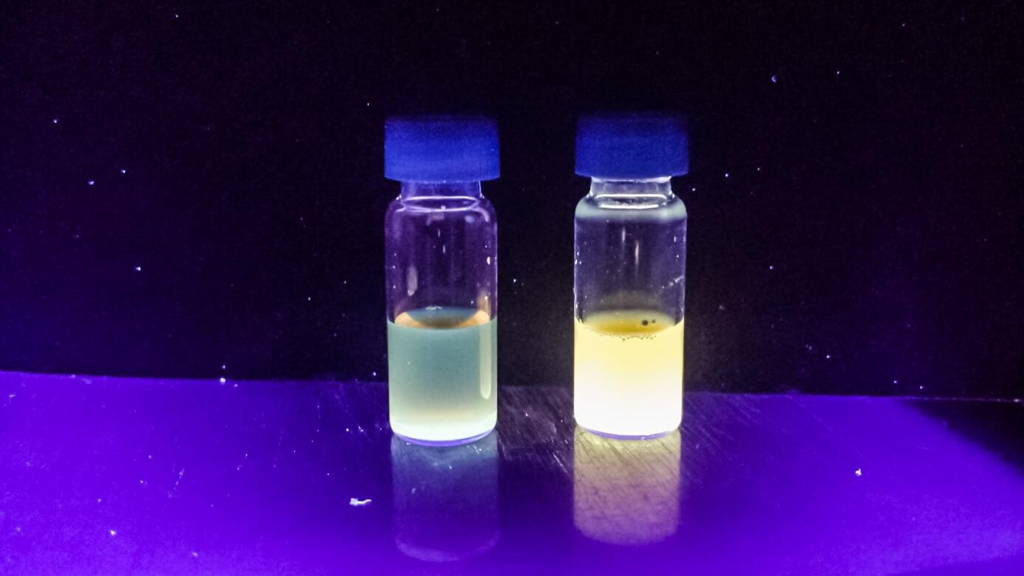Tattoos aren’t just for body art. They can have medical applications, too. Doctors are using them on patients to mark an area for future treatment — particularly for non-melanoma skin cancer such as basal cell carcinoma. But the inks can cause several problems.
Now scientists have developed a better solution: a new ink that glows only under certain light conditions and can disappear altogether after a period of time. The ink is called cross-linked fluorescent supramolecular nanoparticles (c-FSNPs).
The researchers created a time-limited pigment by cross-linking fluorescent supramolecular nanoparticles. Under ambient lighting, the nanoparticles are invisible, which would avoid unwanted markings in a patient’s skin. But the pigment glows under light shining at a wavelength of 465 nanometers, so doctors would be able to use a special light to see the dye.
Testing in mice showed that tattoos created with these nanoparticles didn’t cause inflammation and lasted for three months. This would be long enough to mark a spot from biopsy through treatment for a non-melanoma patient. “We believe that the c-FSNPs can serve as a “finite tattoo” pigment to label potential malignant NMSC lesions,” the researchers write in an abstract.
Read more about the research in the ACS journal here.
Now scientists have developed a better solution: a new ink that glows only under certain light conditions and can disappear altogether after a period of time. The ink is called cross-linked fluorescent supramolecular nanoparticles (c-FSNPs).
Inflamation and discomfort
Patients diagnosed with skin cancer typically have to wait up to three months between a biopsy confirming their condition and treatment. Doctors can mark the spot for possible future treatment using carbon graphite, India ink or fluorescent dye. But these pigments permanently color the skin, and can require laser or surgical removal after a patient has undergone surgery. They can also cause inflammation and discomfort at the site of the tattoo. Kai Chen, Gary S. Chuang, Hsian-Rong Tseng and colleagues wanted to develop a safer, more patient-friendly option.The researchers created a time-limited pigment by cross-linking fluorescent supramolecular nanoparticles. Under ambient lighting, the nanoparticles are invisible, which would avoid unwanted markings in a patient’s skin. But the pigment glows under light shining at a wavelength of 465 nanometers, so doctors would be able to use a special light to see the dye.
Testing in mice showed that tattoos created with these nanoparticles didn’t cause inflammation and lasted for three months. This would be long enough to mark a spot from biopsy through treatment for a non-melanoma patient. “We believe that the c-FSNPs can serve as a “finite tattoo” pigment to label potential malignant NMSC lesions,” the researchers write in an abstract.
Read more about the research in the ACS journal here.








